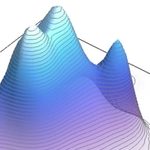- JMP will suspend normal business operations for our Winter Holiday beginning on Wednesday, Dec. 24, 2025, at 5:00 p.m. ET (2:00 p.m. ET for JMP Accounts Receivable).
Regular business hours will resume at 9:00 a.m. EST on Friday, Jan. 2, 2026. - We’re retiring the File Exchange at the end of this year. The JMP Marketplace is now your destination for add-ins and extensions.
- Subscribe to RSS Feed
- Mark Topic as New
- Mark Topic as Read
- Float this Topic for Current User
- Bookmark
- Subscribe
- Mute
- Printer Friendly Page
Discussions
Solve problems, and share tips and tricks with other JMP users.- JMP User Community
- :
- Discussions
- :
- How to connect to API with windows authentification / NTLM / LDAP ?
- Mark as New
- Bookmark
- Subscribe
- Mute
- Subscribe to RSS Feed
- Get Direct Link
- Report Inappropriate Content
How to connect to API with windows authentification / NTLM / LDAP ?
Hello jmp users,
I try to connect to our internal services / api in JMP/JSL (JMP14) with HTTP request method
like
url = "http://192.168.1.1/api/getsomedata;
request = New HTTP Request(
URL( url ),
Method( "Post" ),
Form(
Fields([[
"maxLimit" => "100"
]])
)
);
json = request << Send();
jsl_json = Parse JSON( json );
The URL needs Windows Authentificaion (Ldap, NTLM).
Does somebody know a way, how to provide [username, password] windows credentials to access that ressource via HTTP Request Method?
Related questions are discussed eg here:
http Request with authentication using windows identity
Getting Started With REST in JMP
thank you diz
Accepted Solutions
- Mark as New
- Bookmark
- Subscribe
- Mute
- Subscribe to RSS Feed
- Get Direct Link
- Report Inappropriate Content
Re: How to connect to API with windows authentification / NTLM / LDAP ?
Would Oauth2 be an option? JMP 15 has this in the scripting index.
Names Default To Here( 1 );
/*
https://docs.microsoft.com/en-us/azure/active-directory/develop/v2-oauth2-auth-code-flow
*/
/*
Note: the "code" parameter is set automatically after the redirect occurs
*/
auth_url = "https://login.microsoftonline.com/common/oauth2/v2.0/authorize";
token_url = "https://login.microsoftonline.com/common/oauth2/v2.0/token";
redirect_url = "http://localhost/myapp/";
client_id = "6731de76-14a6-49ae-97bc-6eba6914391e";
client_secret = "JqQX2PNo9bpM0uEihUPzyrh";
scope = "openid offline_access https://graph.microsoft.com/user.read";
auth_fields = [=> ];
token_fields = [=> ];
oauth2 = New OAuth2();
oauth2 << Grant Type( "Authorization Code" );
oauth2 << Auth URL( auth_url );
oauth2 << Token URL( token_url );
oauth2 << Redirect URL( redirect_url );
auth_fields["scope"] = scope;
auth_fields["client_id"] = client_id;
token_fields["client_secret"] = client_secret;
oauth2 << Auth Fields( auth_fields );
oauth2 << Token Fields( token_fields );
auth_header = oauth2 << Get Auth Header();
request = New HTTP Request(
URL( "https://graph.microsoft.com/v1.0/me" ),
Headers( {auth_header} ),
Method( "GET" )
);
data = request << Send;
- Mark as New
- Bookmark
- Subscribe
- Mute
- Subscribe to RSS Feed
- Get Direct Link
- Report Inappropriate Content
Re: How to connect to API with windows authentification / NTLM / LDAP ?
Form based is one option.
Basic is another.
In a nutshell (examples to follow), form based is sending key/value pairs to your webservice much like logging in with a webpage form.
Basic authentication is in found in the header (HTTP Request << Headers option), where the authenitcation is
username:password (Base 64 encodeed). You can also use:
request << Username("my username");
request << Password("my password");
instead of setting the header information directly for Basic.
You'd want both, if possible to be over https.
Typically, your webservice would set a cookie to manage subsequent requests.
If you use Basic, then it wouldn't be required as long as you set the header information with each request.
If you go the Passport option for the webservice, Passport acts a a mediator, it can digest form and Basic(and others) and do the back-end authorization that you want.
Most webservices, like Office 365, Google, Spotify, JMP Live use OAuth2 (not form-based or Basic), but that's due to external visibility of the sites (which add complexity). If it's an in-house behind your firewall, etc, basic or form-based using https is your simplest option, in my opinion.
- Mark as New
- Bookmark
- Subscribe
- Mute
- Subscribe to RSS Feed
- Get Direct Link
- Report Inappropriate Content
Re: How to connect to API with windows authentification / NTLM / LDAP ?
HTTP Request doesn't authenticate with NTLM/LDAP directly.
You'd want to use something like Passport http://www.passportjs.org/
in your webservice, then use form-based authentication or basic authentication over https.
-Bryan
- Mark as New
- Bookmark
- Subscribe
- Mute
- Subscribe to RSS Feed
- Get Direct Link
- Report Inappropriate Content
Re: How to connect to API with windows authentification / NTLM / LDAP ?
Hi Bryan, thank you for that Information, this is good to know!
Is there an example or code snipplet in the JSL documentation about how to use the form based http Basic authentification with jmp? This i would like to try, before changing something in the server software.
thanks again diz
- Mark as New
- Bookmark
- Subscribe
- Mute
- Subscribe to RSS Feed
- Get Direct Link
- Report Inappropriate Content
Re: How to connect to API with windows authentification / NTLM / LDAP ?
Form based is one option.
Basic is another.
In a nutshell (examples to follow), form based is sending key/value pairs to your webservice much like logging in with a webpage form.
Basic authentication is in found in the header (HTTP Request << Headers option), where the authenitcation is
username:password (Base 64 encodeed). You can also use:
request << Username("my username");
request << Password("my password");
instead of setting the header information directly for Basic.
You'd want both, if possible to be over https.
Typically, your webservice would set a cookie to manage subsequent requests.
If you use Basic, then it wouldn't be required as long as you set the header information with each request.
If you go the Passport option for the webservice, Passport acts a a mediator, it can digest form and Basic(and others) and do the back-end authorization that you want.
Most webservices, like Office 365, Google, Spotify, JMP Live use OAuth2 (not form-based or Basic), but that's due to external visibility of the sites (which add complexity). If it's an in-house behind your firewall, etc, basic or form-based using https is your simplest option, in my opinion.
- Mark as New
- Bookmark
- Subscribe
- Mute
- Subscribe to RSS Feed
- Get Direct Link
- Report Inappropriate Content
Re: How to connect to API with windows authentification / NTLM / LDAP ?
Hi Bryan,
thanks for the update! This solution works and is the real solution! I marked this as solution.
best, diz
- Mark as New
- Bookmark
- Subscribe
- Mute
- Subscribe to RSS Feed
- Get Direct Link
- Report Inappropriate Content
Re: How to connect to API with windows authentification / NTLM / LDAP ?
Thanks!
- Mark as New
- Bookmark
- Subscribe
- Mute
- Subscribe to RSS Feed
- Get Direct Link
- Report Inappropriate Content
Re: How to connect to API with windows authentification / NTLM / LDAP ?
Would Oauth2 be an option? JMP 15 has this in the scripting index.
Names Default To Here( 1 );
/*
https://docs.microsoft.com/en-us/azure/active-directory/develop/v2-oauth2-auth-code-flow
*/
/*
Note: the "code" parameter is set automatically after the redirect occurs
*/
auth_url = "https://login.microsoftonline.com/common/oauth2/v2.0/authorize";
token_url = "https://login.microsoftonline.com/common/oauth2/v2.0/token";
redirect_url = "http://localhost/myapp/";
client_id = "6731de76-14a6-49ae-97bc-6eba6914391e";
client_secret = "JqQX2PNo9bpM0uEihUPzyrh";
scope = "openid offline_access https://graph.microsoft.com/user.read";
auth_fields = [=> ];
token_fields = [=> ];
oauth2 = New OAuth2();
oauth2 << Grant Type( "Authorization Code" );
oauth2 << Auth URL( auth_url );
oauth2 << Token URL( token_url );
oauth2 << Redirect URL( redirect_url );
auth_fields["scope"] = scope;
auth_fields["client_id"] = client_id;
token_fields["client_secret"] = client_secret;
oauth2 << Auth Fields( auth_fields );
oauth2 << Token Fields( token_fields );
auth_header = oauth2 << Get Auth Header();
request = New HTTP Request(
URL( "https://graph.microsoft.com/v1.0/me" ),
Headers( {auth_header} ),
Method( "GET" )
);
data = request << Send;
- Mark as New
- Bookmark
- Subscribe
- Mute
- Subscribe to RSS Feed
- Get Direct Link
- Report Inappropriate Content
Re: How to connect to API with windows authentification / NTLM / LDAP ?
Hi, thanks for that suggestion! Good, that this option could work, but it is not that what I was looking for originally. Anyway, since there are some workarounds given, I i will mark this discussion as solved! Thanks diz
Recommended Articles
- © 2025 JMP Statistical Discovery LLC. All Rights Reserved.
- Terms of Use
- Privacy Statement
- Contact Us


